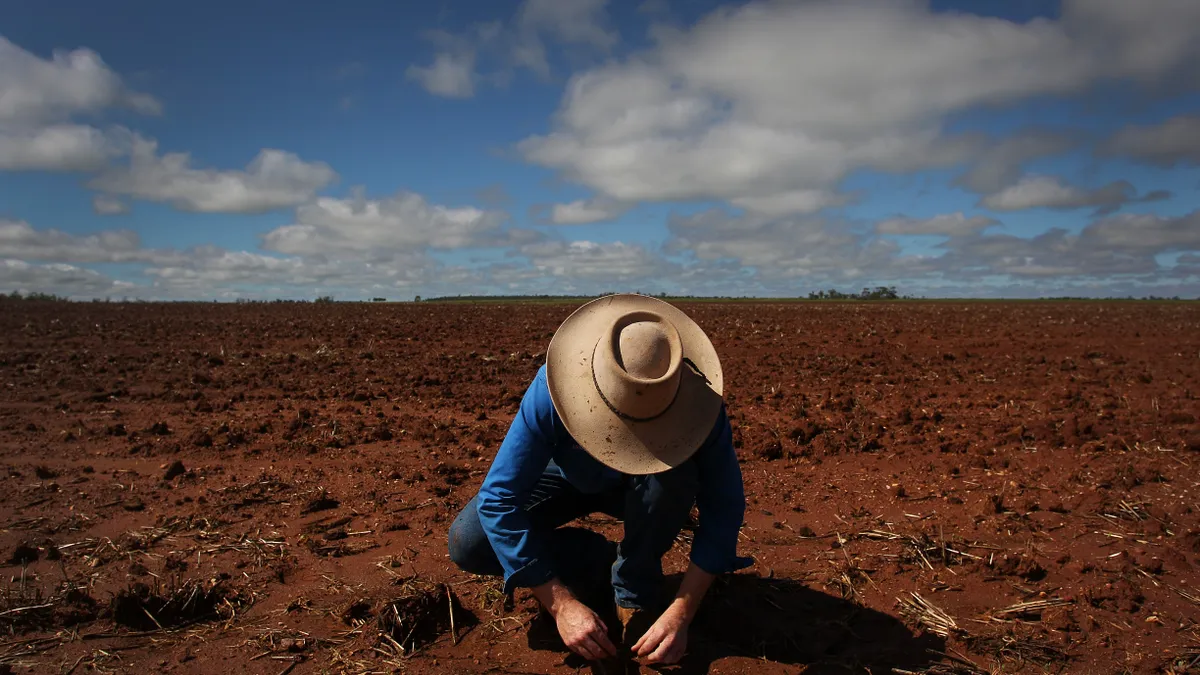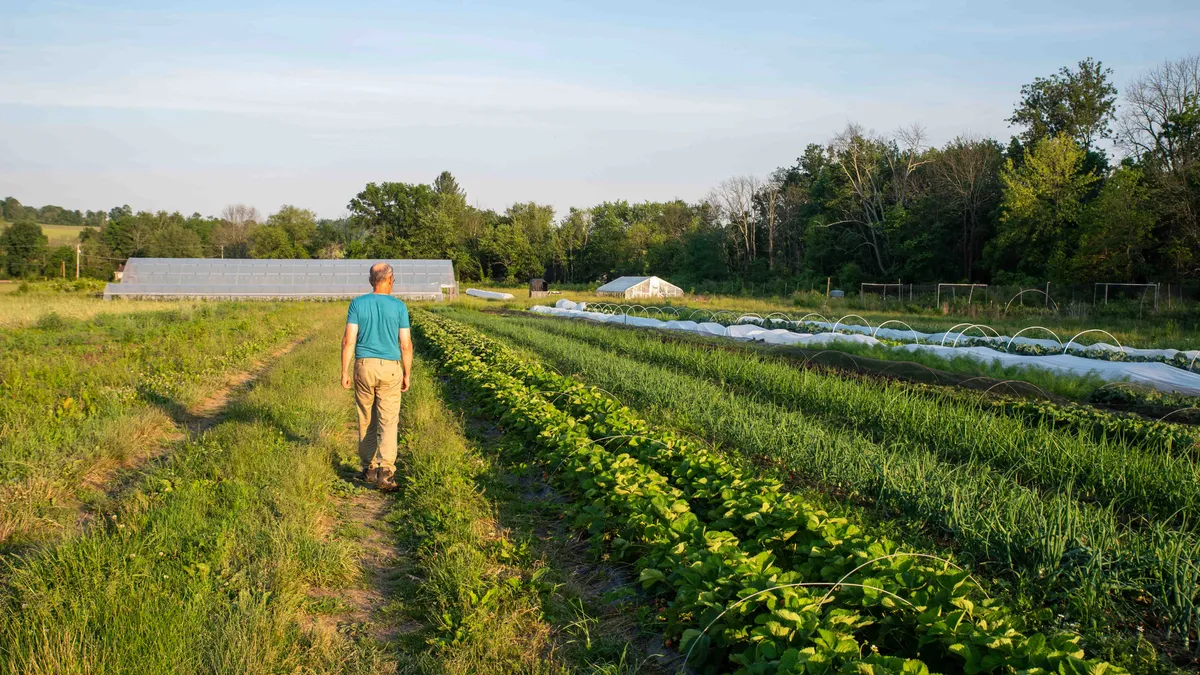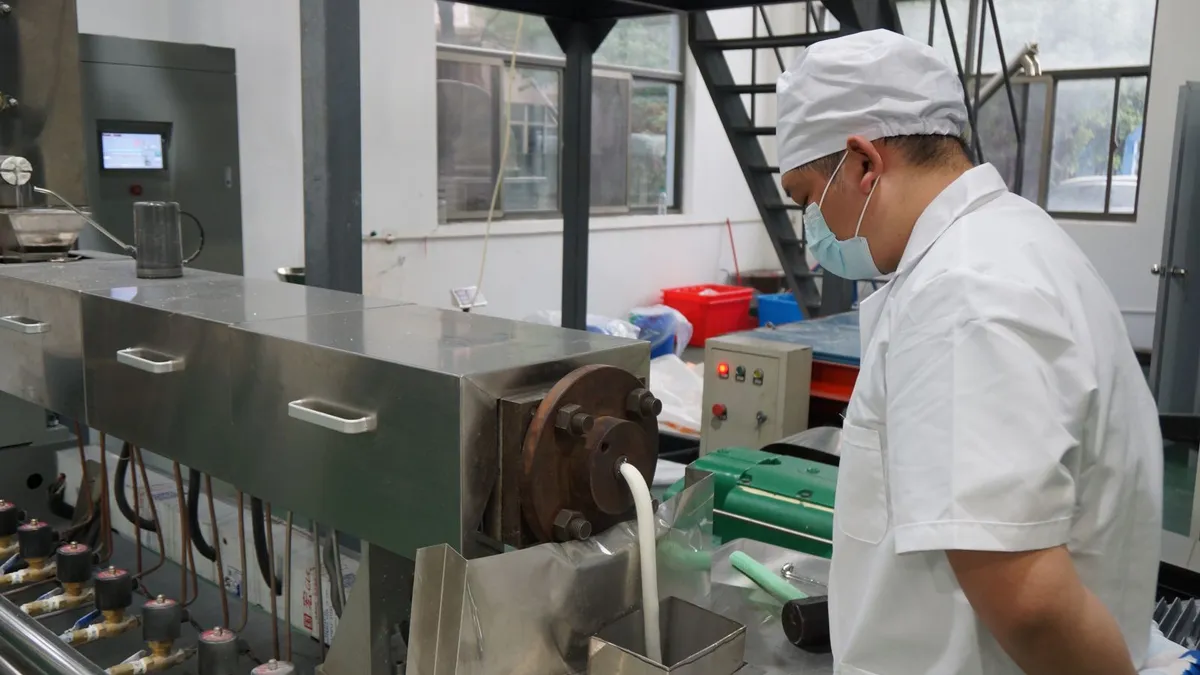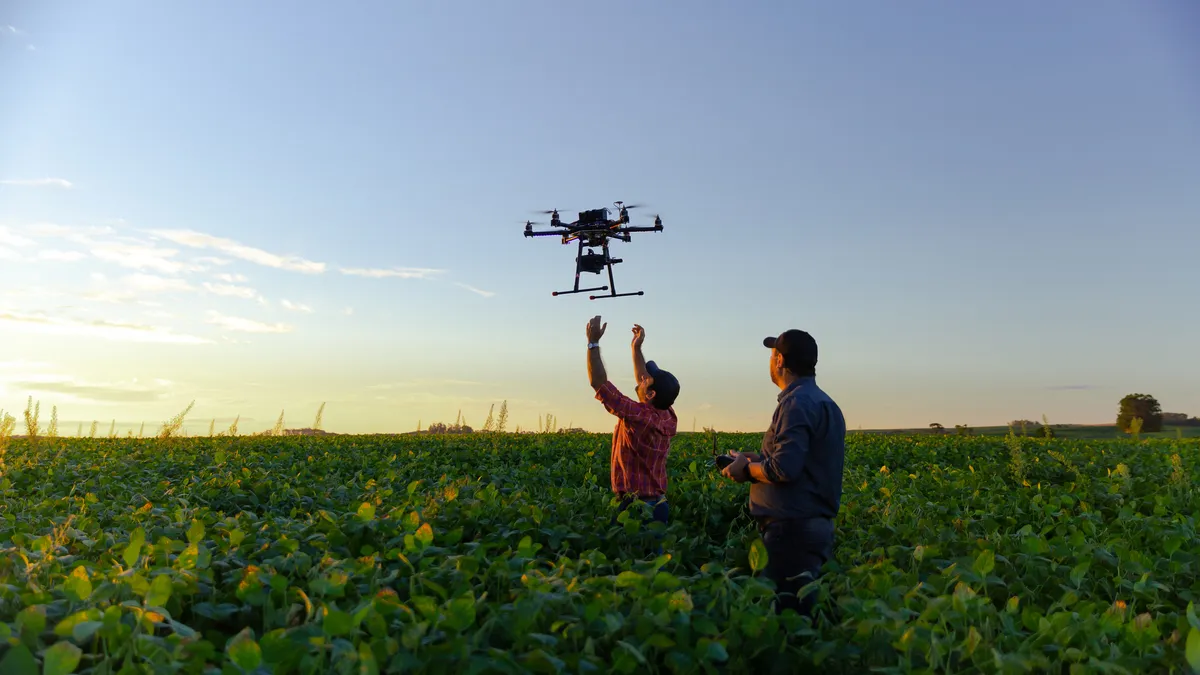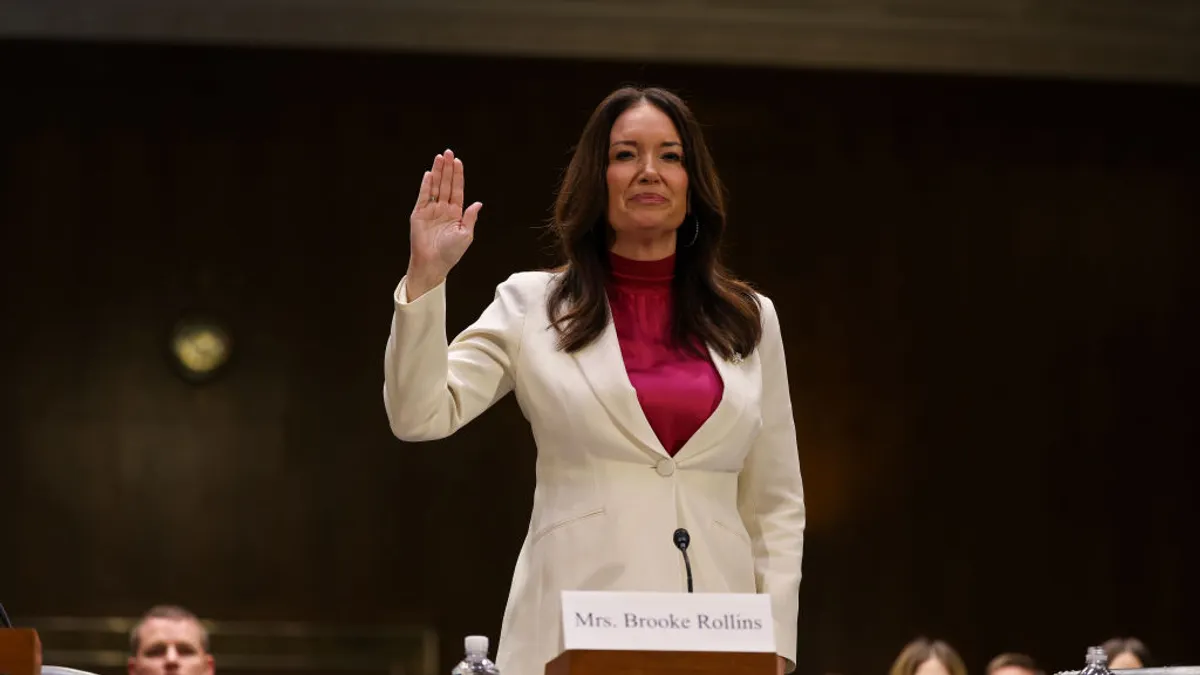The shift to regenerative agriculture, a farming philosophy with a goal to restore soil health and improve the climate, cannot happen overnight. It takes years of education, planning and hard work to transition a farm and its practices to have sustainable outcomes. Even then, companies looking to make the change are struggling to accurately define and measure their regenerative efforts.
HowGood, a sustainable food rating company based in Brooklyn, New York, operates one of the largest databases on food sustainability in the world and has helped some of the largest companies, including Danone, Nestlé and Sysco, account for their carbon footprint and track their sustainability goals.
Agriculture Dive interviewed HowGood Co-Founder and CEO Alexander Gillett a few weeks after Climate Week NYC to get his take on how companies and farmers can accelerate the transition to regenerative agriculture despite startup costs and other barriers preventing adoption.
Editor’s note: This interview has been edited for clarity and brevity.
AGRICULTURE DIVE: What’s the driving issue or question that HowGood is trying to solve in the food and agriculture sectors?
ALEXANDER GILLETT: What we do is we take the nerdiest data, and then we turn it into information that someone can use. So if you’re a sustainability expert within a CPG, you can see the metric tons of carbon produced per kilogram of that ingredient.

But for one of these massive companies, they might have 10 people on their sustainability team, but they might have 1000 people on procurement or 1000 people on research and development. And all of them don't have PhDs in greenhouse gas emissions and biodiversity impacts and labor impacts. So for them, we can show it in red to green. Are you moving towards your target? What are your options for improving it? We can show them what happens if they change the sourcing location. What happens if they change the ingredient to a different ingredient? What happens if they use that same ingredient but they change it to a different subset of practices? How do each of those change your outcomes?
And so we're focused on kinds of outcomes and trying to demonstrate that there is a path to whatever it is that that company is targeting. We're trying to be the people in the room who are saying, this is not “pie in the sky,” here are the concrete steps you need to take over the next five years to get there.
What are the challenges in getting farmers to adopt regenerative agriculture practices?
GILLETT: There's now a lot of farms that are working towards being regenerative and that are having higher crop yields, as well as getting a bright, better price per pound of their product.
But switching from one type of practice to another has an associated cost, and typically during the transition period you have lower yields as well. You have an increase in cost and lower profit. And for your average crop, it ranges, but for your average crop, that’s about a five-year gap. So we call it “filling the gap.”
Six of the ten biggest CPGs in the world use our platform and a huge number of them have been willing to commit to a higher price point up front for that crop while they go through the transition. That tends to be a piece of filling the gap.
Another thing that you need is insurance agencies to then be willing to insure the crop at that higher price point and be able to demonstrate that actually this is a higher value crop at the end point. That’s important because if the farmer wants to take out a loan to make this transition, the bank won't give them a loan if they can't get insured for that piece at a higher price, because then if a big weather event comes through, wipes out the crop, the farmer gets paid out at a conventional rate, then they're not going to be able to pay back the loan. So they need enough data points to be able to do that.
So there's all these pieces where you need the whole group coming together to make this shift. You can also use things like carbon credits, insets or offsets as well, where the farmers can end up being paid for their efforts and help fill that gap. It tends to be depending on their region, depending on the regulatory environment, and depending on the partner environment, and you're pulling all those things together. It's not a sexy, simple answer, but the food system is complex, and so are most of the answers for these systems.
Same question, but from the CPG side. Cost is obviously a big thing, but what's the reservation on their end?
GILLETT: Oh, most of the CPGs that you talk to don't have a reservation about switching to regenerative. They want to. It's hard to find enough of the ingredients to make the change. They're trying to figure out how to spearhead growing that out at a faster rate. The main costs do not come from buying the ingredient. Most CPGs are not willing to be the sole bearers of that cost change. They're asking what about the grocers? What about the ingredient suppliers? What about the government? They're saying, hey, this is on everyone to make that change.
Climate Week NYC took place last month. What did you take away from this year’s event?
GILLETT: I've been doing this for 18 years, and I can tell you, there's never been this kind of commitment and collaboration. Even seven years ago, I would have had to explain to some of the people in the room what the word sustainable means, and now they're all in there with deep-level knowledge of what the word regenerative means and how their supply chains have changed.
The level of knowledge in those rooms is really impressive, but so is the commitment and the budget that these teams have to go and work and solve these issues. Those are the major trends that we're seeing. Even as there’s less commitment to publishing your ESG reports, the companies are still pushing for their own internal targets. That feels really kind of potent and powerful.
What needs to happen in the market to make the widespread regenerative transition possible?
GILLETT: The biggest step that needs to shift right now is the shift from large-scale pilots to just rolling these out. Companies should say “if you want to sell rice to us by 2030, it needs to be regenerative. You have six years to make that transition and this is how we will support that.” They also need to continue pushing on other levers to help get farmers' support across regions, whether that's regulatory, insurance or banking, really leaning in to creating support. And there's a lot of players who are trying to do that latter part, but that commitment can be daunting.
A lot of these companies have goals for 2030, and that feels like, okay, we’ve got six years. You're probably not that stressed about a goal that's six years away, but the thing that a lot of people don't realize is, as we said, the average transition is five years. That means within a year you have to be communicating to these farmers what you're expecting of them if you want to get to that, and what you'll pay for it and how you'll help implement it.
It also means that's the average. Some of these crops take seven years to transition, meaning you should have started last year.



